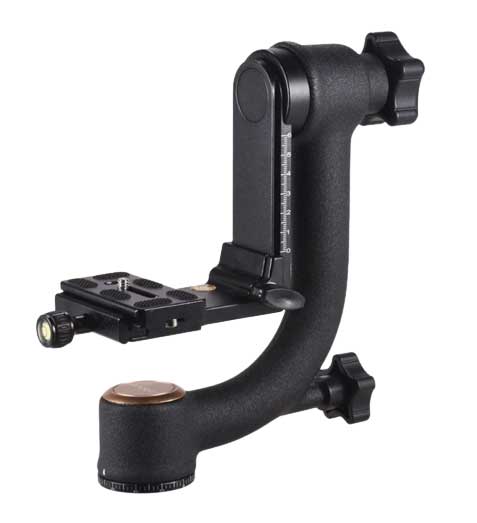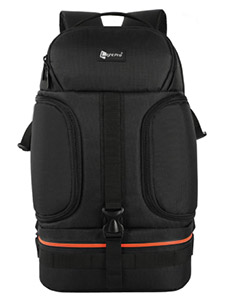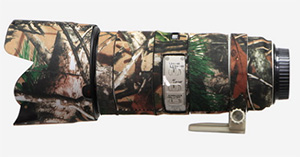13 Best & Useful Wildlife Photography Accessories in 2024
As a wildlife photographer, you have many accessory options apart from cameras and lenses. I have tried many such accessories. Many of them are not useful at all. So, in this guide, I will share the 13 best wildlife photography accessories you can consider investing in if you are interested in wildlife photography.
1. Bean Bag

Bean bag
When you are in any national park, you will be photographing wildlife sitting inside a safari vehicle. Here, you don’t have the luxury of using a tripod for your shots.
So, the best option is to use a bean bag for steady wildlife images. You can keep the bean bag on the door frame when you lower the window.
In most safari vehicles, there will be circular metal frames where you can keep the bean bag. You can keep your camera and the long telephoto lens on top of it and take the shot.
One main advantage of using a bean bag is that you can easily move from one position to another by removing the bean bag and placing it in another place.
It will ensure that there is no time wastage in setting it up. So, pick a bean bag when you go for a wildlife safari next time. It does not cost much.
I find bean bag to be one of the most essential wildlife photography accessories.
2. Gimbal Head

When it comes to wildlife photography, you have two types of head options for your tripod. You can go either for a Gimbal or ball head.
I recommend using a Gimbal head since it offers a better pan and tilt control for your heavy camera setup. It allows you to capture good shots.
Compared to a ball head, Gimbal will be bulkier.
When it comes to Gimbal heads, you have two options, high-quality branded ones and Chinese ones. I have tried both.
So, I recommend staying away from the low-cost Chinese ones. They are not so good.
3. Monopod

Carrying a tripod will be tough if you are trekking inside a forest for wildlife photography. It will increase your fatigue.
So, investing in a good monopod for such situations is a better option.
You can either go for an aluminum or carbon fiber one. Carbon fiber will be less heavy than aluminum ones.
I have both these types of monopods. A carbon fiber monopod will be a better choice since it helps to reduce the overall weight.
Also, you can go for a 3-section or 4-section monopod. A 3-section monopod will be easy to carry.
Whatever monopod you select, make sure its payload capacity is more than your camera gear weight.
4. Lens Extenders/ Teleconverters

The lens extender/ teleconverter is another useful wildlife photography accessory. I always carry lens extenders whenever I travel for wildlife photography.
Wildlife sightings often appear far, and there won’t be any option to get close. The lens extender is a useful wildlife accessory in such situations.
You can connect the extender between the camera body and the lens to get that extra reach. It acts as a focal length multiplier.
There are two types of commonly used lens extenders. They are the 1.4x and the 2x extenders.
For example, if you use a 1.4x extender with a 500mm lens on a full-frame camera body, the effective focal length will increase from 500mm to 700mm.
One drawback of using an extender is it reduces the aperture by a stop or two, depending on the extender you are using.
For example, if you use a Canon 1.4X iii extender with Canon 500mm f4 IS II lens on a Canon 1DX Mark III camera body, the maximum aperture will be reduced from f4.0 to f5.6.
Also, there will be a slight reduction in image quality, which will be tough to notice with the naked eye.
5. Rain & Dust Cover

The rain cover is one of the most useful wildlife photography accessories. You must invest in a good rain cover for your camera and lens. It is available in different sizes and colors.
I recommend choosing a camo color since you are using it for photographing wildlife. Makes sure to select one that can easily fit your camera and lens.
Don’t go for a cheap, low-quality one. I have tried many such covers. They don’t last long. So, you will end up buying another one after one or two years.
Make sure you can easily operate the camera functions after using this cover.
6. Good Camera Bag

You must invest in a rugged camera bag that you can carry around easily when you travel.
The camera bag must have provision to carry your main camera body with telephoto lenses and other accessories.
If you are going outside your country in an airplane, there will be restrictions on the camera bag size you can carry on the aircraft. So, make sure that the selected camera bag size is good enough to fit in an airplane.
You can either go for a backpack type or a backpack with a trolley-type bag. If there is a trolley option along with the backup, you don’t have to carry it on your back all the time.
7. Additional Memory Cards

When I go for a wildlife photography trip, it can be for one to two weeks. Also, I will be capturing lots of images, especially in burst mode. Thus, the memory card will become full very fast.
So, carrying multiple memory cards is always better to ensure you never run out of memory. It has happened to me many times during my early days.
Make sure to invest in memory cards with a write speed that matches the write speed of your camera. It is to ensure fast shooting.
Go for memory cards of capacity 64 GB and above.
8. Rugged Portable Hard Drive

Even if you carry multiple memory cards, there is still a chance that you will run out of memory. So, carrying a rugged portable hard drive with you is always better.
You can carry a hard drive of 1TB or 2TB capacity.
When it comes to hard drives, there are two options, the regular Hard Disk Drive (HDD) and the Solid State Drives (SSD).
HDD is a cheaper option when compared to SSD. But SSD is more reliable and easier to carry because of its small form factor.
Earlier, I used to carry a 1TB HDD. Now, I carry a 1TB SanDisk SSD with me whenever I go for a photography trip. You can check my review of this SanDisk 1TB SSD drive here.
You can consider reading this article to learn different ways to back up photos from a memory card without a computer. It will help to avoid carrying a laptop for your photography trip.
9. Lens Coat

Lens coat is another good wildlife photography accessory that you can consider investing in. When you go for wildlife photography, it is essential to ensure you don’t distract the animal.
The colors in your camera can be a big distraction for the animal. So, they may tend to walk/run away when you point the camera toward them. It is more prominent when you use the white telephoto lenses from Canon and Sony.
You can avoid it completely if you use a Camo lens coat for your telephoto lens. It will help to blend your camera gear with the surroundings.
The lens coat also helps to provide additional protection for your lens from dents and scratches.
10. Camera Cleaning Kit

When you are inside the forest with your camera, there will be lots of dirt and dust accumulating on your camera gear.
You need to do a basic cleaning of your camera once you are done with the day’s photography. So, you must always carry a camera and lens cleaning kit.
The kit must contain the following items: a lens brush, lens pen, air blower, and lens cleaning cloth.
Consider reading this article to learn how to clean the camera and lens using a cleaning kit.
11. Bandana
When you move inside the forest in the safari vehicle, there will be lots of dust particles in the air.
It can enter your mouth and nose. It is the case when you use an open jeep for a wildlife safari. It can result in serious health problems.
You need to protect yourself from this dust. You can use a bandana to cover your mouth and nose.
The advantage of using a bandana is that you can drop it easily around your neck when you are not using it. So it is pretty easy to use.
12. Binoculars

Another useful accessory for wildlife photographers is binoculars. A binocular will help you scan your surrounding for wildlife.
You can easily locate the subjects with it. Thus, you can move inside the forest accordingly.
Also, binoculars will not consume much space in your camera bag. You don’t need high-end binoculars. Any good-quality binocular is good enough to do the job.
13. Headlamp

From my experience, most wildlife sightings happen early morning or late evening. So, you may have to walk before sunrise and after sunset to get into your safari vehicle. Only then you can be at the spot on time.
So, it is a good idea to get a good headlamp. A headlamp with a single light is good enough to do the job.
Go for one that comes with a USB charging option. You can easily charge it using your power bank or adapter. It will not cost you much.

